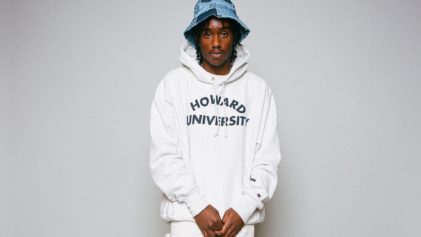
Students in the audience wave during First Lady Michelle Obama speech at the Tuskegee University Commencement ceremony in Tuskegee, Alabama Saturday, May 9, 2015. (Official White House Photo by Chuck Kennedy)
In 2014, the North Carolina Senate unanimously moved to remove a budget provision that would have given the state’s Board of Governors permission to study the closure of any school that had an enrollment decline of 20 percent between 2010 and 2013. The provision, designed specifically to give the state the power to close Elizabeth City State University, a Historically Black College and University (HBCU), reflects a troubling reality for the nation’s Black schools.
Despite a recent spike in Black enrollments due to a growing racial resentment that is being felt nationwide, many of the HBCUs are at the verge of financial collapse, with some — such as Wilberforce and South Carolina State University — facing the loss of accreditation due to persistent debt. Even among the more stable of the HBCUs, the reality of this cash crunch is acutely felt.
“The combination of fewer students who can arrange financial aid, coupled with high school counselors who are steering students to less expensive state and junior colleges, has resulted in lower enrollment and this trend is expected to continue,” Howard University Trustee Renee Higginbotham-Brooks wrote in her much-quoted critique letter.
“Howard will not be here in three years if we don’t make some crucial decisions now.”
The HBCU designation was established by Congress in 1965 to recognize any accredited school which was “established prior to 1964, whose principal mission was, and is, the education of black Americans.” Many of these schools — started during Reconstruction largely in the South — traditionally represented the only opportunities that were available for African-Americans to gain educational equity. In a very real way, HBCUs are responsible for the establishment and development of the Black middle class. Today, 11 percent of all African-American college students attend HBCUs, despite HBCUs only making up only 3 percent of the nation’s educational portfolio, with 20 percent of all African-American undergraduate degree holders coming from HBCUs.
This, however, does not sway the unsettling reality that, today, many HBCUs may be historically Black, but not currently Black. Take, for example, Bluefield State College. With a student body that is 82 percent white and with no Black faculty on staff, Bluefield still counts itself as an HBCU. So does Lincoln University of Missouri, which is 40 percent African-American; St. Philip’s College at 13 percent (as of 2011); and Gadsden State Community College at 21 percent. Today, more than one in every four HBCU student is non-Black.
In the case of Bluefield, the road toward the loss of its Black identity was a convoluted but familiar one. Located in a predominately white community, Bluefield lost its ability to draw Black students when West Virginia state authorities closed the school’s dorms following the 1968 bombing of the gymnasium. The bombing followed student protests regarding the state’s replacing of Black faculty and staff with less qualified white instructors.
The closing of the dorms added to the pressures of an increasingly combative attitude fueled by the school’s white president who turned the once predominately Black Bluefield into a predominately white commuter school.
Due to a quirk in federal law, a school once recognized as an HBCU will always be an HBCU, regardless of current student composition. Most HBCUs however, cannot blame their flagging Black enrollments on such blatant racial animosity.
Besides the standing argument that offering preferential treatment to schools for racial reasons is unfair, many states have used the HBCUs’ declining enrollment levels as justification for unequal distribution of resources among the public schools. In 2016, for example, North Carolina proposed cutting the tuition for three of the state’s public HBCUs — as well as potentially renaming them — in order to increase enrollment numbers. The bill made no mention how the lost tuition would be made up in the schools’ budgets.
The HBCUs’ biggest problem, however, is choice. When the HBCUs were founded, there were little choices of where African-Americans could go to school. However, Brown vs. Board of Education and the desegregation of education on the basis of race in America made it possible for Black students to choose any educational institution they qualify for to attend.
Some, however, would argue that the HBCUs are still needed because the educational system in America is still segregated, but by economic status now instead of ethnicity. HBCUs traditionally accommodate more low-income students than non-HBCUs.
“It should be noted that many HBCUs were set up to help not only newly freed African-Americans and those already free, but also to teach those from lower socioeconomic parts of our country. So, I think HBCUs should be known for having had open doors for all cultures and people of all colors since their beginnings,” Jerry Crawford II, associate professor of journalism at the University of Kansas and director of the Journalism Multicultural Scholars Program, said to Atlanta Black Star.
“There are many reasons why there is a challenge to have more people of color, Blacks in this instance, attend HBCUs. These range from the lack of state funding for these schools from legislatures, to the loss of federal assistance, such as Pell Grants, to the lack of consistent governance at these institutions. Like any school or university, the ability to ‘solicit and retain the support’ of any alumni base, has a lot to do with the amount of wealth and disposable income of its graduates. Most HBCUs are primarily two or four-year institutions, with few masters programs. There are even fewer doctoral programs.”
Crawford pointed out that this increased degree of choice has led to HBCUs being denied assets that other schools can claim, like top-tier athletics. As HBCUs are not set up to attract star talent, they are also not posed to benefit from lucrative television deals or championship appearance fees. Additionally, most HBCUs, due to a lack of alumni financial mobility, cannot call on large endowments to cushion the lean times.
A hard reality is that the graduation rate of Black college students is significantly less than that of white students. Per an Education Trust study, the six-year graduation rate for Black students is nearly 20 percentage points lower than that of white students. The study attributes this to a lack of college preparation for low-income students. Despite this, Black students at HBCUs have a graduation rate six points higher than Black students at non-HBCU schools.
“I think it is important to discuss context when engaging in discussions like these,” Shannon Waite, clinical assistant professor at Fordham University’s Graduate School of Education, told Atlanta Black Star. “Considering the target student population of HBCUs and the fiscal reality that all colleges and universities are facing right now, I do think that HBCUs are finding it imperative to stay in the black, and that may mean diversifying the student population. I also think we have to consider [that] the students who primarily attend HBCUs tend to be of low socioeconomic status, first-generation college students, and Pell Grant eligible. When you consider the demographics of the aforementioned population you have to think about how K-12 education factors into the success or failure of these students.”
The demand and need for HBCUs are still there. In light of growing racial animosity nationwide, Black students are seeking educational options that are more comfortable and accommodating to their needs. For HBCU’s the question is are they willing and able to provide the alternative education environment, remain financially stable and provide the needed resources to students looking to create avenues out of poverty.


